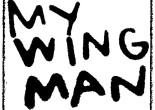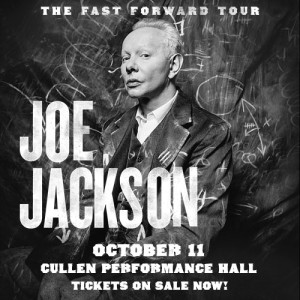What We Do Is Sacred - An Interview with Carrie Schneider on Houston Arts and Equitable Pay

by Michael McFadden
In early November, Houston artist Carrie Schneider and Jennie Ash of Art League Houston (ALH) co-organized charge, a practicum on alternative models and equitable pay for artists. With funds raised by private donors and the support of the ALH board, charge garnered attention for issues artists have always faced and opened up the dialogue at a crucial time for the Houston art scene. FPH art writer Michael McFadden talked with Schneider in mid-November on the potential future(s) of local artists.
Can you speak a little to the impetus of the charge practicum? I know you and Jennie Ash (Visual Arts Director at Art League Houston) went to a workshop earlier this year about WAGE. What inspired you to organize something in Houston?
I felt frustrated that the CAMH (Contemporary Arts Museum, Houston) was putting on a show demonstrating how they are supportive of and invested in Houston artists, when actually we were asked to take on the costs of putting on our first museum shows as young artists to balance their budget (which is $3 million annually). I was sharing these thoughts transparently and out loud, and I was told to “watch out” and “be quiet” which is crazy. Why would the engine of an industry — the artist — not even be allowed to have a voice in it?
I heard about the Valuing Labor in the Arts practicum at UC Berkeley co-organized by Helena Keefe and Shannon Jackson, and Jennie Ash and I signed up to go. Being in a room of people thoughtfully considering these issues, among incredible thinkers like Julia Bryan Wilson, made me realize that these quiet and invisible negotiations can be a large part of the work itself. I liked the idea of transplanting an event about paying artists from the most likely place to host it — Berkeley — to the least — Houston. But it is a critical time for Houston. We’re topping all these lists, people are moving here from all over, and often its our work put forward when the city is branding itself as an arts and culture center — how “vibrant” and “livable” it is. But instead of watching Richard Florida’s follow-and-profit-off-the-artists-until-they’re-all-replaced model play out in this city, we hope to open up another possibility.
As the Mayor works (or has others work) towards a new Cultural Plan, do you feel that the interests of artists are being represented?
They had a meeting with over-emphatically soothing smooth jazz and spiral food, with vague information except a website they built where “we can all participate.” No, Artists are not really invited to these meetings; I crash them, and we should all crash them. That was actually a large reason for doing charge right now: the Cultural Plan is being written; Houston Endowment is restructuring; the city itself is being touted for its arts; but artists don’t have a voice at the table. We conceived of charge as a way for us to build our own table. With the Cultural Plan, there’s no new money for arts. They’re just restructuring how its handed out, strategizing how to extract more cultural capital without any more investment.
What are your worries/concerns as pertains to this new plan? Your hopes?
Houston Arts Alliance is trying to recast itself as an arts presenter of massive master-planned projects which artists get plugged into. I participated in the the first one, and it is no good for artists; we need our independence. If artists are only chosen according to how well they fit the premise and politics of such an agenda, then we’re basically an underpaid PR department, and we lose our free speech and the ability to make work that is truly and thoughtfully responsive to this place. All Houston Arts Alliance needs to do is redistribute the Hotel Occupancy Tax to artists and handle public art. They don’t need to fundraise and compete with organizations that don’t have stable revenue stream. They don’t need to be an arts presenter. They just need to have competent panels and write checks. The Cultural Plan averting this crisis would be a big win!
Similar to stadiums that compete across the globe as “destinations” despite being largely homogeneous, art is taking a similar turn. Our funding for the arts comes from tourism money — which means our audience is always elsewhere. I really disagree with this. I think the art of a place should be tied to it and fed from it and ultimately for it, not an interchangeable, ubiquitously legible commodity. If I’m allowed to dream even bigger, I’d posit Zach Moser’s idea that the Hotel Occupancy Tax be earmarked for local Houston artists. Then we would really foster our own geographically and culturally specific arts community — instead of just a sloppy seconds reflection of New York. I’m all about also bringing people here for the exchange and inspiration — but someone needs to take a stand for what we have growing here. It makes sense, too. Why would Houston spend money bringing New York’s cultural offerings here for tourism? People should just go to New York for that.
In the end, I’m glad Rick Lowe is up there. I just don’t want people who haven’t done their critical diligence on these issues to be determining our field. Artists are so vitally needed. What we do is sacred.
With the audience mainly consisting of artists, do you feel charge has lent itself to awareness of the issues it purports within the context of the city and the current changes?
Step one was starting with and centering on the artists, which is a major thing that is not happening. Admittedly, it is only step one, but to my mind there’s no way to move forward without that. Then charge was the initial event for artists in a series of three convenings. Next will be a Fresh Arts hosted event in February for organizations and funders. After that, we need another entity to take on policy as this Cultural Plan is written. Here’s an opportunity where the organizations, institutions, and intermediaries really can be the advocates and supporters of artists that they so often claim.
I think your question is also about whether this ripples out, outside of the art bubble. I think so. Professionals from other fields shake their heads when I tell them the examples of how artists are treated. But also people think that enjoying the work is its own payment. That is telling of our mindset — and about how threatening it would be to the dominant economic system if people could enjoy what they do or do it for themselves.
You chose to present artist-led alternatives to the more traditional organizations alongside lectures pertaining to issues of the larger economy. How did you decide on who to invite (both in terms of alternatives and lecturers)?
We wanted a full spectrum. We had simultaneous sessions with different approaches, philosophies, tones, and presenters because there is no one right answer. It was a mix of people we met at VLA in Berkeley, peoples whose work we’d been following for a long time, and representation from different cities and backgrounds. In this respect working with Art League was amazing. Jennie and I had creative control, and we worked together to platform a conversation that often polarizes artists and admins. We also decided that it would be half local and half national presenters, and locals would get equal pay and equal platform as the visiting presenters. We want to make conversations around equitable compensation of artists and artists agency over their own labor unavoidable in Houston from now on but also to avow their complexity in a way that critically considers artists work in the larger economy.
Do you feel WAGE (Working Artists and the Greater Economy) offers a truly fair solution to the issue of artist fees?
Since they’ve released their fee calculator I’ve had lots of in depth discussions about what’s missing or what’s off — but those discussions weren’t happening before in a consequential way. Now we can hash out the increments of equitability — because we finally have a just floor to work from, and I give WAGE credit for providing that publicly. I think what WAGE offers is much more fair than what was happening before — which was mysterious, individually determined amounts with much more room for the artist to lose, and with room only for artists of privilege who can afford to work for free. WAGE helps finally catch up funding models to contemporary art practices that may go beyond object manufacturing, and reflect the wider economy’s turn to entertainment and service provision by contingent workers. WAGE cuts off the argument that artists should work for free because they make something that should sell (a painting) and deals with a wider range of relevant art practices. Lise Solskolne described how WAGE applies pressure from the bottom up, but how we also need pressure from the top down, where funders would use tools like WAGE and the Houston Area Artists Report to ensure that their support arrives where intended.
Gabriel Martinez of Alabama Song spoke a bit to the royalties act and offered a bit of insight about the artist contract. Do you, personally, believe that the principles of the contract are fair to both the artist and those who purchase/present a piece?
I didn’t get to attend his whole session, and I’m not educated enough to comment, but it is something I look forward to learning more about.
by Guest Author
- Sarah















